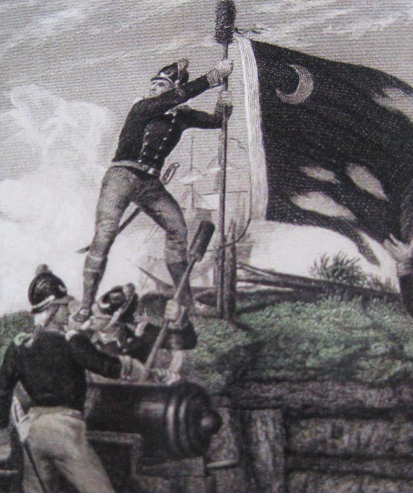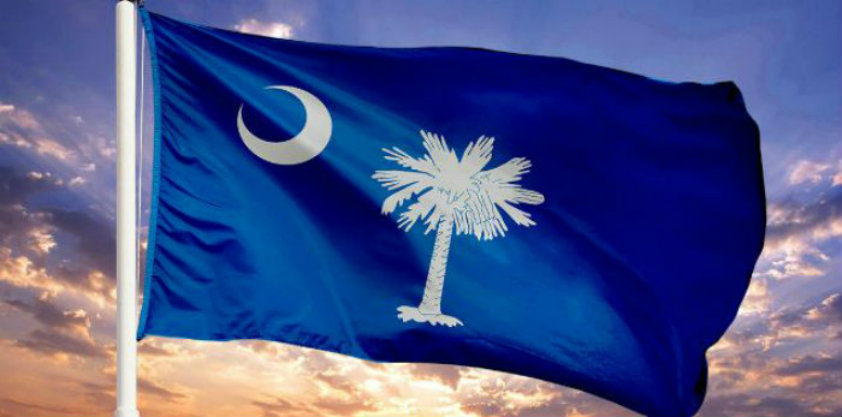CAROLINA DAY
Each year, Charlestonians celebrate Carolina Day, celebrating the victory of Col. William Moultrie who, commanding fewer than 400 men in an unfinished fort with just 31 cannon, defeated a British force of nine war ships carrying 300 cannon and 2,200 soldiers.
South Carolina patriots had begun constructing the fort, under Col. Moultrie's supervision, on Sullivan’s Island in early 1776. As the superior British Naval fleet sailed into position to attack the fort on June 28, however, only two of the fort's four walls had been completed. Moultrie's men hustled to complete as much of the fort as possible using materials readily at hand there on the beach: palmetto logs and sand. The effort proved fortuitous, as the soft wood of the palmettos and the sand absorbed the impact British shells quite gracefully, resulting in little structural damage.
The battle lasted all day and the British ships were greatly damaged by the Patriot artillery rounds. South Carolina's last Royal Governor, William Campbell, was wounded aboard one of the British ships. One of the most enduring stories of the contemporary news coverage of the event, however, was that a piece of shrapnel (then referred to as a "splinter") literally ripped the pants off British Naval Commander Sir Peter Parker. Around 9 p.m., the British retreated, having suffered heavy losses both in terms of their men and their vessels.
This first major American naval victory shored up the spirits of the delegates meeting at the Second Continental Congress, giving them hope for victory and encouraging their decision to declare America's Declaration of Independence six days later. Shortly thereafter, the fort was named Fort Moultrie in honor of its commander.
In addition, the Battle of Fort Sullivan was the origin of South Carolina's state flag's design. Its blue background recalls the local indigo color of the Patriots' uniforms. The palmetto tree, of course, comes from the logs they used to build the fort. And finally, what today is often mistaken for a crescent moon is actually a rendering of the gorget worn by Col. Moultrie in battle that day.


